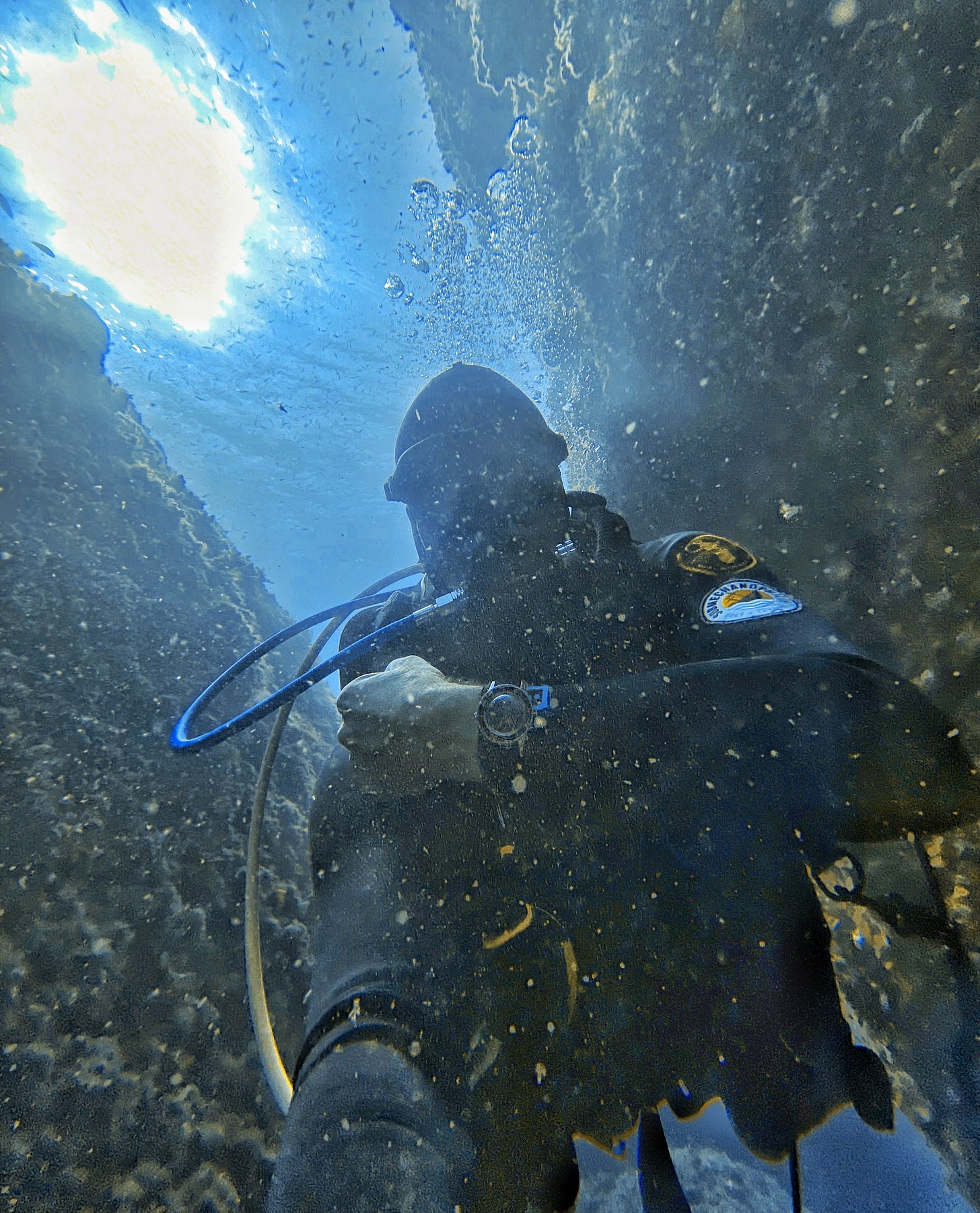“Rinse and repeat” seems to be the theme of my year. From ice diving, to a remote Polynesian atoll, a few dives in the Great Lakes, the chilly Pacific coasts of California and Ecuador, then the balmy American Gulf Coast, my dive gear hasn’t been dry very much. Finally, in what I presume will have been my last dive trip of the year, I found myself back where it all began, not for me, but for scuba diving itself: the Mediterranean coast of France.
During the winter of 1942-’43, navy commander, Jacques-Yves Cousteau slipped into the Mediterranean off a beach on the French Riviera, descended underwater and took a breath. The act was a simple one, but also one of tremendous faith in the mechanism he and engineer, Emile Gagnan, had invented—the scaphandre or “diving set” that allowed him to draw air from a cylinder on his back. Two years later, the unimaginatively named “CG45 regulator” was patented and the rest, as they say, is history. Cousteau rebranded his invention the “Aqua-Lung,” and set up companies to distribute and sell the revolutionary “self-contained underwater breathing apparatus” (SCUBA) all over the world. Those of us who dive have been using some evolution of that first aqua-lung ever since.
Keep reading with a 7-day free trial
Subscribe to SWIMPRUF to keep reading this post and get 7 days of free access to the full post archives.

